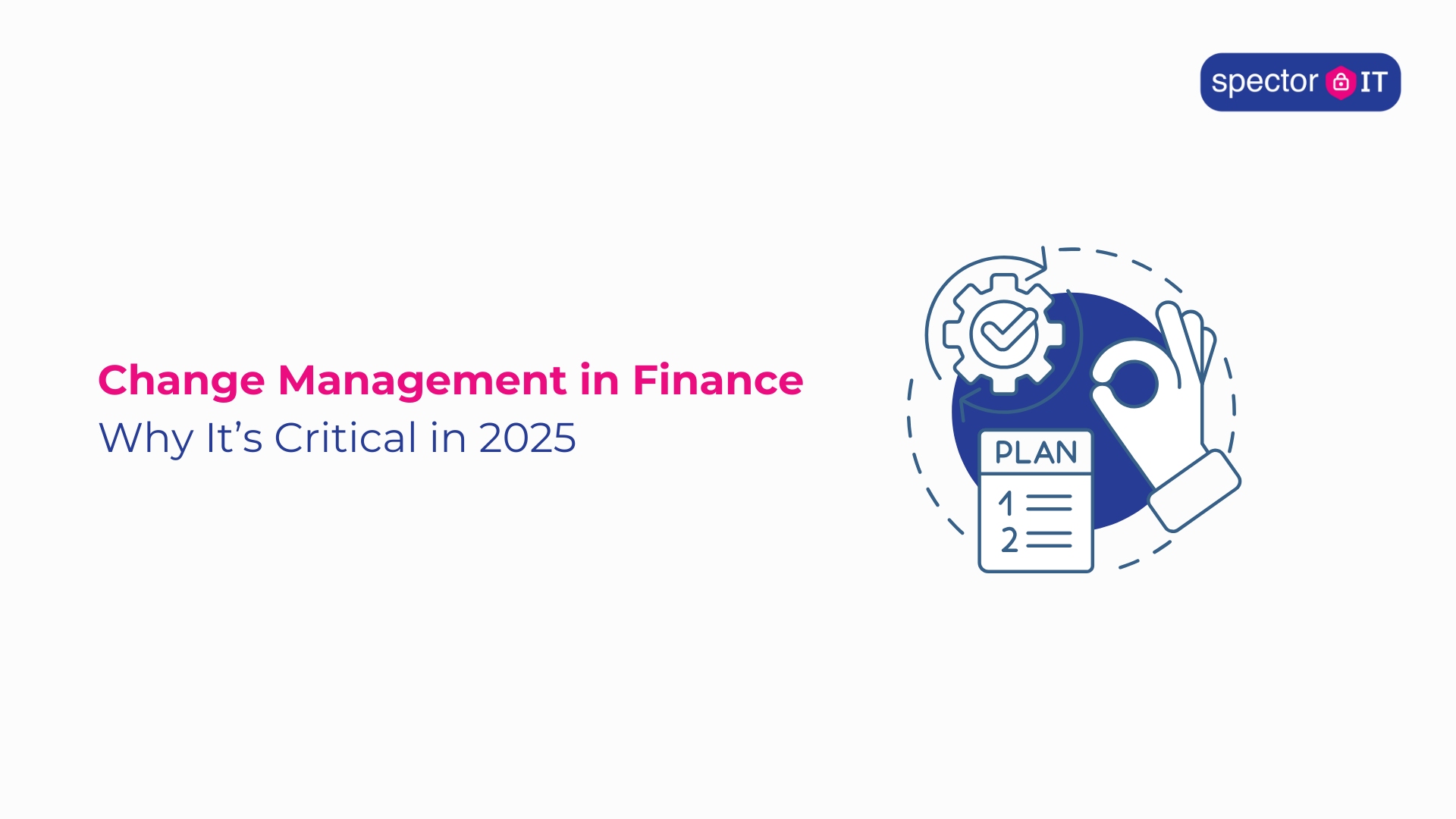
IT Change Management in Finance: Why It’s Critical in 2025
In the ever-evolving realm of Information Technology within a financial company, managing change is not just an option; it’s an imperative. The IT landscape has undergone seismic shifts in recent decades, and the pace of change shows no signs of slowing down. Keeping up with the latest technology trends and practices is crucial, but simply adopting cutting-edge solutions does not guarantee success. In this blog post, we’ll delve into the multifaceted world of IT change management in the context of the financial sector and why it’s a mission-critical aspect of IT operations.
Related read: Change Management for SMEs – A 2025 Playbook
What Is IT Change Management in Finance and Why It Matters
IT change management in finance refers to the structured process of designing, approving, deploying, and validating changes to IT systems—such as software upgrades, compliance tools, security patches, or integrations. In the financial sector, these changes must align with regulations like DORA & GDPR while avoiding disruption to mission‑critical operations.
Read more on Change Management in Financial Services
Major Drivers Requiring Strong IT Change Management in Finance
Regulatory and Compliance Shifts
Frequent changes in regulatory frameworks like DORA, PSD3/Open Finance, and new audit rules demand precise IT changes—from audit logging policies to data encryption and secure APIs.
Related read: Change management challenges in financial services regulatory compliance
Modernization of Legacy Infrastructure
Whether it’s migrating payment systems or rolling out new trading platforms, upgrades must be carefully managed to avoid operational disruption and compliance gaps.
Related read: IT Change Management for Financial Services
Emerging Technologies and AI
As financial firms pilot AI tools, workflows and approvals shift. Effective change management ensures safe integration with clear governance frameworks—especially encouraged under RegTech and responsible AI guidelines.
Five Pillars of IT Change Management in Finance
1. Define & Govern the Process
Establish a clear policy that covers change types (standard, normal, emergency), risk grading, and governance roles such as a Change Advisory Board (CAB).
2. Streamline Approvals & Review
Use purpose-driven guardrails to reduce unnecessary bureaucracy: risk-based fast tracks for routine changes, detailed review for high-risk deployments. This enables agility while maintaining control.
3. Communicate Clear, Role-Based Messages
Different audiences—from traders to compliance teams—need different information at each stage. Create communication templates for key milestones and changes.
4. Measure & Report Key Change Metrics
Track:
-
Success rate of changes (no rollback), target ≥ 95%
-
Frequency of post-change incidents, aim ≤ 5%
-
Time-to-change completion and impact
These KPIs demonstrate process maturity and support audit claims.
5. Leverage Automation & AI
Modern ITSM tools (e.g. ServiceNow, Jira, Atomicwork) help automate change workflows, approvals, and rollback triggers. AI can flag risky rollouts and track adoption weight across enterprise users.
How Modern Trends Shape IT Change Management in Finance
AI & GenAI Integration
As financial firms embed AI into reporting or risk systems, change frameworks must include pilot testing, ethical reviews, and governance steps before deployment.
RegTech as a Tool for Change
Using RegTech automates compliance-related changes—audit logging, policy updates, data classification—reducing manual errors and speeding deployment.
Guarding Against Transformation Fatigue
Top-down, fast-tracked change can cause disruption fatigue among teams. Build incremental, inclusive change routines to maintain engagement and prevent resistance.
Common Pitfalls in IT Change Management for Finance
-
Overcomplex approval cycles → creates blockers
-
Poor change visibility → stakeholders uninformed until failure
-
Lack of training during rollout → user resistance
-
Ignoring feedback mechanisms → repeated mistakes
The solution: streamlined digital frameworks, role-based communication, and frequent feedback loops.
Ready to Streamline Your IT Transformation?
In conclusion, IT change management within a financial company is not merely a best practice; it’s a necessity. Successful IT operations require not only staying current with technology but also adapting to change strategically while managing risks and fostering a culture of innovation.
Change management is the compass that guides financial companies through the dynamic IT landscape, helping them thrive and deliver value to their organisations.
For more insights into the dynamic world of IT and technology within the financial sector, contact us today to schedule a discovery call.
Discuss how we can assist you in implementing IT change management best practices and ensuring your IT department within your financial company is well-prepared for the future.
Post updated on 23/07/25

